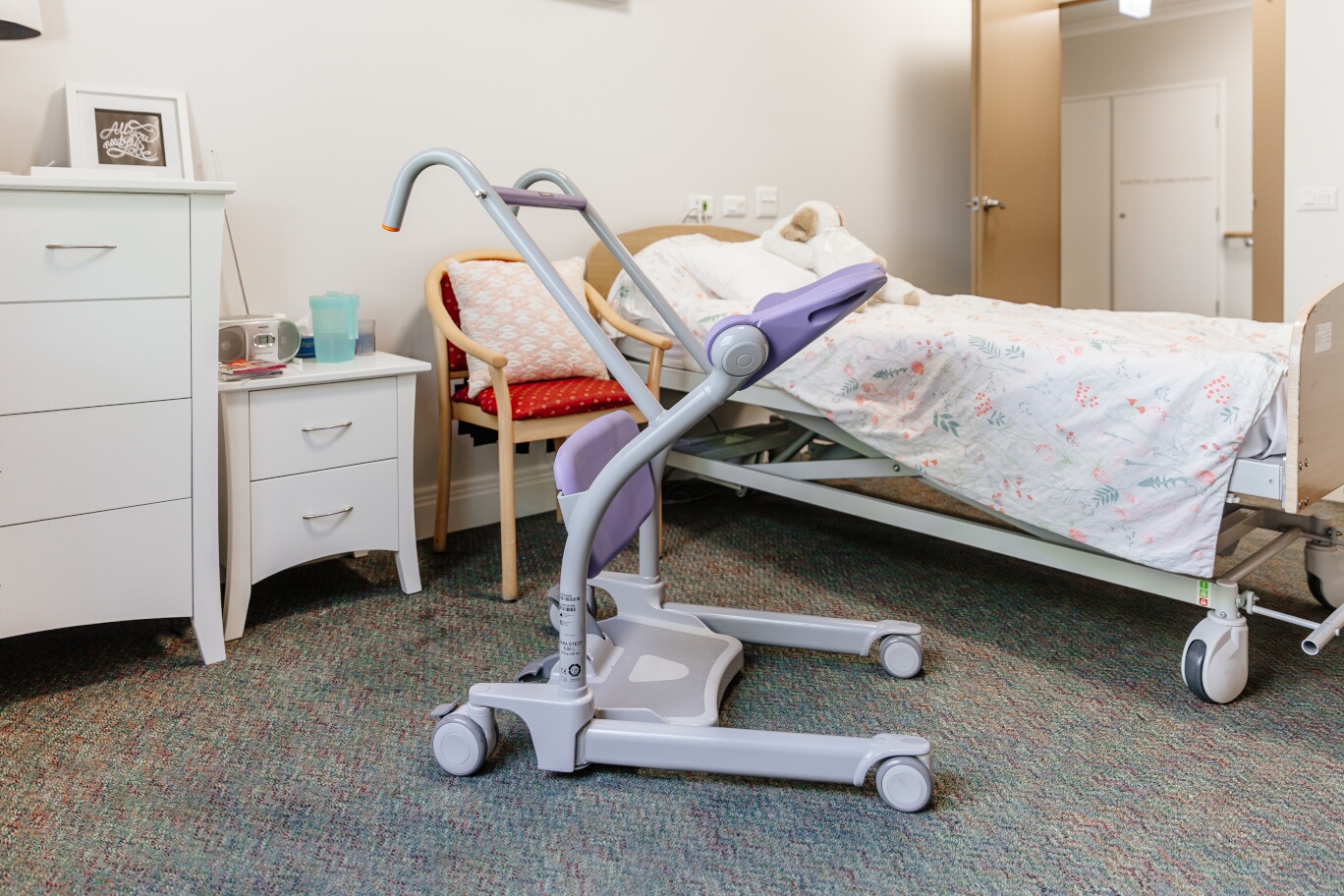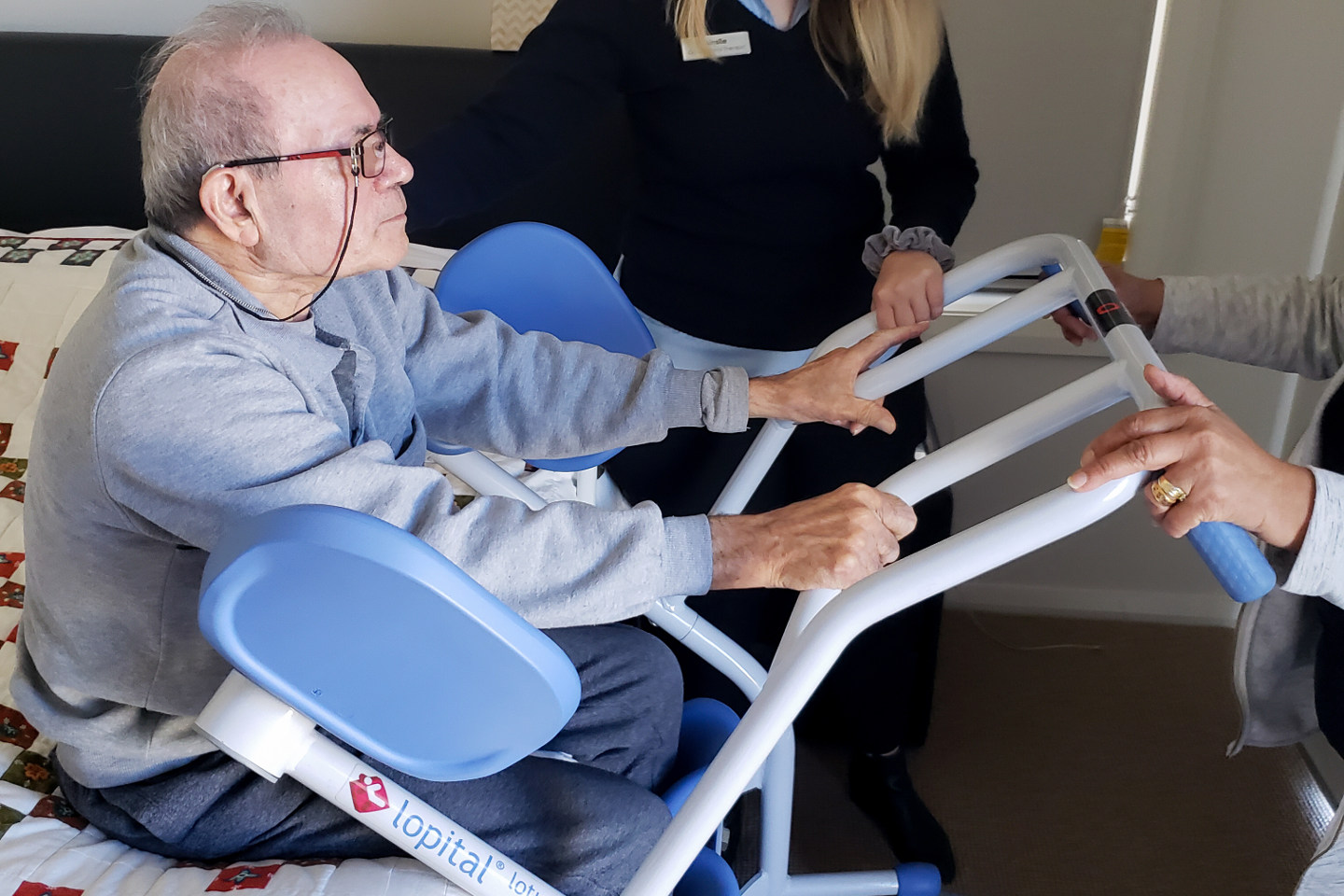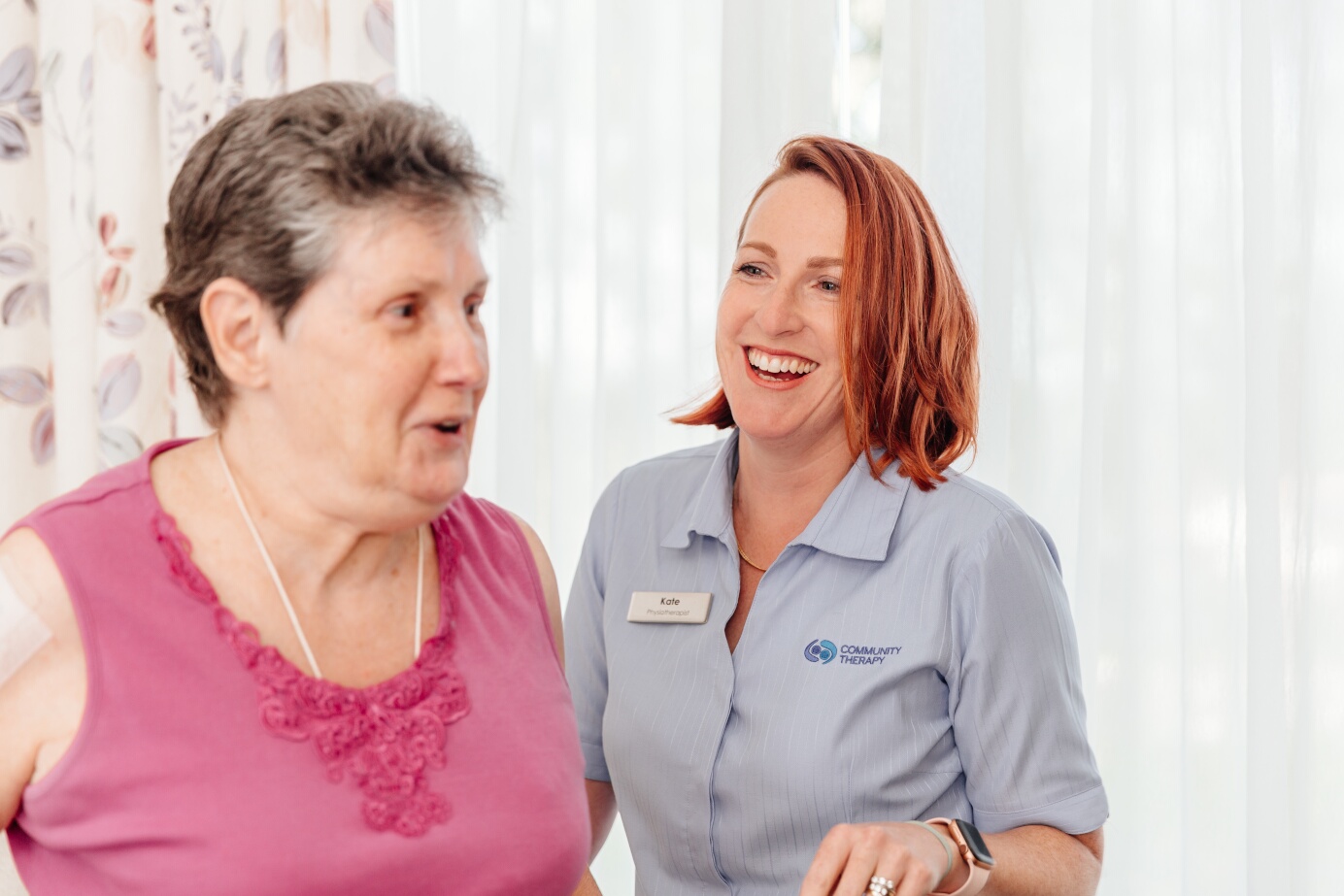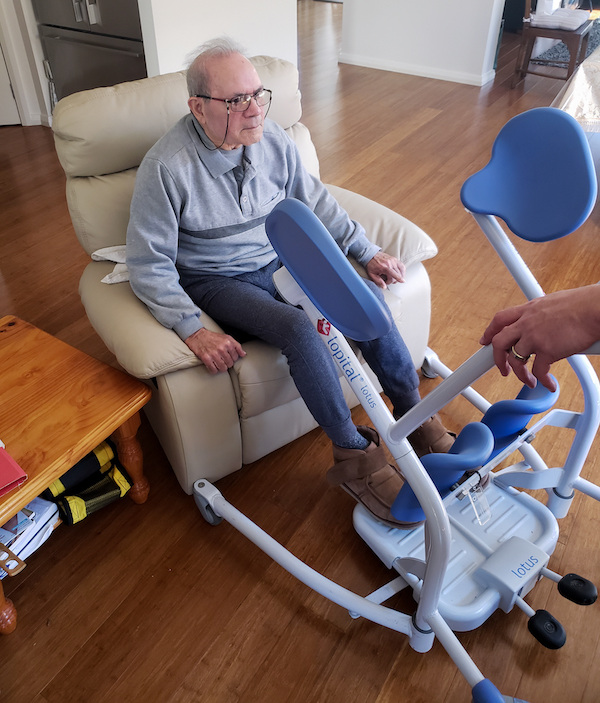What is a Stand Aid?
The Stand Aid is a piece of assistive technology that helps people transfer safely from one seated surface to another. It is a suitable piece of equipment to assist someone that is experiencing difficulty standing up and walking.
Community Therapy’s Occupational Therapists assist people with the prescription of Stand Aid devices to ensure that it is the most suitable assistive technology device to help them with their transfers.
Importantly, Community Therapy holds no affiliation or bias towards equipment suppliers, so we will always select the best solution for our clients.

How a Stand Aid Works
A stand aid is a non-powered transfer device with a support bar, which the user can reach and pull themselves into position. Seat pads are then folded down to provide a seated surface for transfers. They are mostly used to transfer between seats and beds or commodes.
It has moveable legs, which allows them to move in and out, which is helpful for negotiating different widths of chairs.
In many cases the stand aid can allow for a single carer to assist with transferring a person from one surface to another. An Occupational Therapist can complete an assessment to determine the amount of support required to operate the device.
It is important to note that organisations (i.e. hospitals, aged care facilities) will often mandate that the WHS governance of the device requires two people to operate.
Environments Stand Aids are Used
Non-powered transfer devices are used in all types of scenarios. This includes
- NDIS participants living at home
- Homecare package clients living at home
- Private purchasers living at any location
- Group homes
- Hospitals
- Residential aged care
A primary consideration of the environment is what floor type the device will be used with. They are best used on firm, flat surfaces. Stand aids may have difficulties moving across carpet, particularly heavy, soft carpet.
When a client is moving properties, our Occupational Therapist would discuss and advise how the device will be used in the new environment.

Assessing for a Stand Aid
The typical indication for a stand aid is when someone is displaying difficulty moving from sitting to standing or walking.
It’s noted that the person should have adequate power on their arms to pull on the bar, and adequate power in their legs to support a semi-standing position, as well as the capacity to maintain their balance whilst holding onto the bar and sitting.
Our Occupational Therapist would conduct the necessary functional and equipment assessments, including working with informal or formal care staff.

Education on How to Use the Stand Aid
Fundamentally, this type of device is quite simple to use, which contributes to its popularity.
There are key factors of safety to consider and our Occupational Therapist will train both the person and their informal or formal support persons around its safe use.
Predominantly, this is about when and how to use the brakes, the safest way to turn and maneuver the device, and also the safety considerations to decrease the risk of falls while seated in the device.
Some people may need recommendations on how to maintain skin integrity and decrease the risk of skin tears across the lower limbs on the shin support of the device.

Stand Aid Referrals for Community Therapy
Typically, we are engaged to perform a comprehensive Occupational Therapy assessment and this is just one piece of equipment and we may provide other recommendations as well.
For example, someone that is struggling to transfer may also need assistance with devices in their bathroom, their bedroom, may need a different type of wheelchair or cushions.
Having a skilled Occupational Therapist has the added benefit of reviewing other domains of a person’s life and care needs that may need to be met by different pieces of equipment or different types of therapy as well.
People can be referred to Community Therapy for many reasons. Please contact us or submit a referral to start the process.
We provide Physiotherapy, Occupational Therapy, Speech Pathology, Dietetics, Massage and other subservices inhouse.

Stand Aid FAQ
-
What are examples of a powered device people may use over a Stand Aid?
There are many types of transfer devices that are powered which Community Therapy is experienced with.
One is a stand-up lifter, which has a sling and helps people move from standing to sitting and sitting to standing with a powered mechanism.
Another is full hoist or sling lifter, which is a cradle-type of sling, which helps people move from surface to surface by picking them up with the assistance of staff or family as operators of those devices.
-
Where will we be getting the equipment from and how much are they?
Community Therapy has no preference or alliances with equipment manufacturers. Instead, our clinicians will assess each person individually and source an appropriate supplier for the most suitable piece of equipment determined for that person.
Our clinician will discuss the different prices of different models with the client, taking funding, personal preferences and availability of models into consideration.
-
How long does it take to arrive?
The availability of the device from suppliers can vary.
Most importantly, the correct style of device needs to be identified first, and then the supplier which can deliver this device the quickest can be selected jointly with the person.
Please note, when an NDIS participant is needing to access these pieces of equipment, the way in which they’re managing funds within their plan can impact where this can be purchased from.
In particular, if they are agency managing this component of their plan for equipment, they will need to purchase this from an NDIS registered supplier of equipment.

